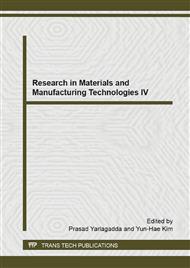p.757
p.767
p.771
p.776
p.780
p.788
p.794
p.799
p.809
The Simulation and Accuracy Analysis of Sound Filed Reconstruction Based on Fourier Transform-Source Simulation Technique
Abstract:
Acoustic transform algorithm plays an important role in sound pressure reconstruction. According to a new sound pressure reconstruction of near-field acoustic holography based on Fourier transform-source simulation technique, this article through a simulation experiment with the models of Simply Supported Plate Sound Source, verify the feasibility of the method. Furthermore, in order to verify the effectiveness of this method, this paper analyzes the impact factors that affect the accuracy of the Reconstruction. And it does simulation analysis mainly from the parameters of the Virtual Source Plane, the Distance of the Holographic Measurement and the parameters of the Holographic plane. Therefore this study provided referencing basis for later study on complex field of sound pressure reconstruction based on this technology.
Info:
Periodical:
Pages:
780-787
Citation:
Online since:
December 2014
Authors:
Price:
Сopyright:
© 2015 Trans Tech Publications Ltd. All Rights Reserved
Share:
Citation:


